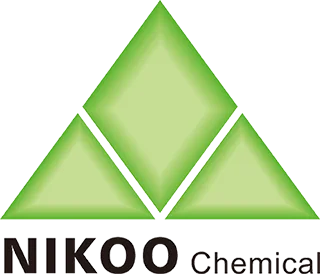Scented Candles: Ambiance, Aromatherapy, and How to Choose Wisely
Scented candles transcend simple illumination, becoming powerful tools for crafting atmosphere, influencing mood, and enhancing well-being. Understanding their diverse applications and how to critically evaluate them ensures a safer, more satisfying experience.
Key Applications:
Atmosphere & Ambiance Creation: The primary draw. A flickering flame paired with carefully curated scents instantly transforms a space. Warm vanilla or cinnamon evokes cozy comfort, fresh linen or ocean breeze suggests cleanliness and openness, while rich amber or sandalwood creates an air of sophistication or relaxation. They set the stage for intimate dinners, relaxing baths, focused work sessions, or festive gatherings.
Aromatherapy & Mood Enhancement: While not a substitute for medical treatment, certain fragrances can influence mood through association and physiological responses. Lavender and chamomile are renowned for promoting relaxation and reducing stress. Citrus scents (lemon, orange, grapefruit) can uplift and energize. Peppermint or eucalyptus may aid focus and clear sinuses. Lighting a candle with an intentional scent can become a mindful ritual for winding down or boosting spirits.
Sensory Masking & Home Fragrance: Effectively neutralizes lingering cooking odors, pet smells, or stale air, replacing them with pleasant, long-lasting fragrance. Acts as a more dynamic alternative to passive air fresheners.
Decorative Element: Candles serve as stylish decor accents. Elegant vessels, unique colors, and varying sizes add visual interest and warmth to any room, even when unlit.
Ritual & Mindfulness: The act of lighting a candle can signify the start of a ritual – meditation, journaling, a relaxing bath, or simply marking the transition from work to leisure. Watching the flame fosters a moment of calm and presence.
Critical Evaluation: Beyond the Scent
Choosing a quality candle involves more than just liking the fragrance:
Fragrance Quality & Throw:
Cold Throw: The scent intensity when unlit. Should be pleasant but not overwhelming.
Hot Throw: The crucial factor – how well the scent disperses when burning. A good hot throw fills the intended room without being cloying. Poor hot throw renders the candle ineffective.
Scent Authenticity & Complexity: Does it smell natural and true to its description? Does it have depth, or is it one-dimensional and artificial?
Wax Composition:
Soy Wax: Popular, natural, burns cleaner and slower than paraffin, generally holds fragrance well. Look for 100% soy (avoid blends marketed as "soy"). Biodegradable.
Paraffin Wax: Petroleum-derived, often cheaper. Can produce more soot and potentially release more volatile organic compounds (VOCs) when burned. Burns hotter and faster.
Beeswax: Natural, burns very cleanly and slowly with a subtle honey scent. Excellent air-purifying properties but expensive and holds added fragrance less effectively. Often blended.
Coconut Wax: A premium option, burns cleanly and slowly, holds fragrance excellently. Often blended with soy or other waxes.
Rapeseed Wax: Emerging sustainable option, similar benefits to soy.
Wick Type & Performance:
Material: Cotton is standard. Wooden wicks offer a soft crackling sound but can produce more ash. Avoid wicks containing lead or other metals (rare in modern quality candles).
Performance: Should light easily, burn steadily, and self-trim (curl into the melt pool). Should not excessively smoke, mushroom (form carbon balls), or drown in wax. Proper wick size is essential for an even burn pool.
Burn Quality & Safety:
Even Melt Pool: On first burn, aim for the wax to melt evenly across the entire surface to the edges within 2-4 hours. Prevents "tunneling" (wax building up on the sides).
Minimal Soot: Clean-burning candles produce little to no visible black smoke or soot residue on the vessel or nearby surfaces. Trim wicks to 1/4 inch before each lighting.
Vessel Safety: Glass containers should be thick and heat-resistant. Avoid placing on cold surfaces immediately after blowing out.
Longevity (Burn Time): Measured in hours. Higher quality waxes (soy, coconut, beeswax) generally burn slower than paraffin, offering better value over time.
Making Informed Choices:
Read Labels: Look for wax type (100% preferred), fragrance source (essential oils vs. fragrance oils - both can be high quality), wick material, and estimated burn time.
Consider Value: Price per ounce/burn hour is more telling than total cost. A slower-burning, high-fragrance-load candle may be worth a higher upfront cost.
Prioritize Cleanliness: Opt for natural waxes and cotton/wood wicks for cleaner air quality.
Trust Your Nose & Eyes: Evaluate cold throw initially, but hot throw and clean burn are paramount. Observe performance during use.
Conclusion:
Scented candles offer a multi-sensory experience, enhancing ambiance, mood, and home fragrance. By looking beyond the initial scent and evaluating wax composition, wick performance, hot throw, and burn quality, consumers can select candles that are not only delightful but also safer, more effective, and offer better value. Mindful burning practices ensure enjoyment and longevity. Choose wisely, burn safely, and savor the atmosphere.

